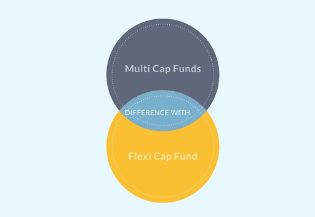
HELP LINE +91 9883818627

HELP LINE +91 9883818627






Brijesh is back with another dose of Straight Talk, where he tackles another tricky issue head-on. Clients ask for high returns and low risk. What do you do? Look for solutions that don’t exist? Offer solutions and hope against hope that they deliver to the stated requirements? Or, do you step back and understand what the real need is as opposed to the stated need, and then deliver solutions that address the real need? Read on as Brijesh shares his incisive insights into what clients really need and how you should diagnose correctly and prescribe correctly.
A patient went to a doctor complaining about a severe headache. The doctor checked him up and gave some medicines. After a couple of days the patient came back to doctor, presented him sweets and said – “Doctor, the medicine that you gave for my headache was apt. It cured my headache.”
The doctor looked at the patient with open eyes, smiled and said – “But I never gave you any medicine for the headache’.
Surprised, the patient asked – ‘Then which medicine did you give’.
The doctor said ” Well, I examined you and noticed that you had a bad stomach due to eating and you had a gastric problem which caused you the headache. I gave you the medicine to cure your stomach which controlled your gas and thereby relieved you of headache”.
Moral of the story – “Understand the real problem by proper diagnosing skills”.
This story is equally applicable to financial advisors
I can very strongly relate this story with the profession of financial advisory. The client comes to an advisor asking for returns ( headache ) whereas the actual concern is safety ( stomach ). Very often in this case, the advisor is unable to diagnose the problem and prescribes medicine to provide returns and the medicine backfires. Most advisors think clients come to them for higher returns. Apparently it may be true but in hindsight the client’s main concern is safety of his investment.
After two decades of working in this profession and handling clients I have realised that returns are just a part of the client’s expectation. It is not the end.
8 observations about client attitudes towards risk and return
I summarise below my observations and advise to my fellow advisors with regard to behaviour of clients, risks and return:-
Am I hinting at 0% equity allocation ? No.
All I am suggesting is to have proper asset allocation ( into debt, equity, gold, property, etc.). I am suggesting that allocation to sector funds should be lesser than diversified equity funds. Allocation to liquid funds should be preferred rather than taking interest rate calls by investing in duration funds for 3-6 months time horizon.
Most advisors in the country have not been able to deliver even 10% pa. CAGR portfolio returns to their clients over last 5-10 years across products and asset class they are dealing in. Several clients portfolio are still in losses ( due to bad asset allocation ). If you are selling a product to your client with the pitch of “higher returns” , you need to re-evaluate yourself whether you are mis-selling or advising. It’s time for an advisor to take responsibility of his actions.
The point is – If the client is happy with average returns, why is the advisor taking additional risk on client’s money to deliver higher returns and eventually giving below average returns. Many advisors tell me that clients demand higher returns and so they are forced to take risk. This is fundamentally wrong. It’s the pressure of acquiring client, business and income that advisors are advising riskier products. In fact, their job is to explain and convince the client about the risk-return philosophy and to make them understand before they suggest a product.
Make a proper diagnosis. Treat the disease, not the symptom
Become a good doctor. Diagnose the problem of the client which is more towards safety. Design a portfolio having protection in place. The essence is that clients will settle for lesser returns but not negative returns. It is not worth taking higher risk in anticipation of higher returns if clients are not comfortable. And for God’s sake, don’t invest client’s hard earned money with your ‘gut feeling’. Do proper research, understand their risk appetite and give them what is good for them. If they don’t take your advice, leave them but don’t advise a product of higher risk which they cannot afford.




















